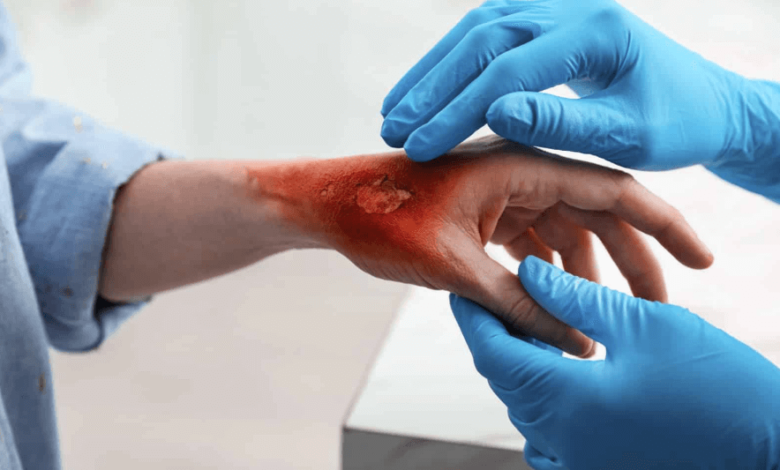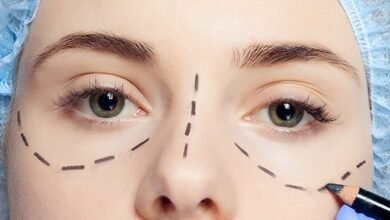Third-Degree Burns and Skin Grafts: The High Costs of Medical Recovery

Recovering from third-degree burns is a long and painful process. It involves not only physical pain but also emotional and financial struggles. These burns damage all layers of the skin and may affect underlying tissues. Patients often need intensive medical treatments, such as skin grafts, to heal and look better. However, these treatments can be very expensive and require a long time to recover.
The high cost of recovery includes more than just hospital bills. Rehabilitation, medications, and special care can lead to ongoing expenses that may last for months or even years. If you are facing this difficult situation, talking to serious burn injury lawyers can help you understand your options for getting compensation to cover medical bills and other related costs. Knowing the financial and medical challenges linked to third-degree burns is important for anyone going through this tough journey.
Understanding Third-Degree Burns and Their Severity
Third-degree burns are the most severe type of burn injury, affecting all layers of the skin and sometimes underlying tissues like muscles and bones. These burns often result from prolonged exposure to flames, scalding liquids, or electrical currents. The damage is so extensive that the skin cannot heal on its own, making advanced medical interventions necessary.
The impact of third-degree burns goes beyond the visible damage. Survivors often face nerve damage, loss of sensation, and a heightened risk of infections. Immediate medical attention is critical to prevent complications and stabilize the patient for further treatments such as skin grafting or reconstructive surgery.
See also: “The Ultimate Guide to Healthy Meal Prep: Tips and Recipes”
The Role of Skin Grafts in Burn Treatment
Skin grafts are often necessary to treat third-degree burns, as the damaged skin cannot regenerate naturally. During this procedure, healthy skin is taken from an unaffected area of the patient’s body or a donor source and transplanted onto the burn site. This helps protect the wound, reduce infection risks, and promote healing.
While skin grafts are life-saving, they are also resource-intensive. Each procedure requires precision, specialized equipment, and skilled medical professionals, contributing to its high cost. In many cases, patients may require multiple grafts over time, further adding to the financial and emotional toll of recovery.
Rehabilitation and Physical Therapy After Burns
Recovery from third-degree burns extends far beyond initial treatments like skin grafts. Physical therapy and rehabilitation play a vital role in restoring mobility and functionality, especially when burns impact joints or limbs. Therapists focus on managing scar tissue, improving flexibility, and helping patients rebuild strength.
The rehabilitation process is often lengthy and demands consistent effort from survivors. Sessions may continue for months or even years, creating significant financial and emotional burdens. These challenges can feel overwhelming, but they are an essential part of the healing journey.
Despite the obstacles, rehabilitation is crucial for burn survivors to reclaim their independence and rebuild their lives. It provides the tools and support needed to overcome physical limitations and move forward with confidence and resilience.
The Emotional Impact of Third-Degree Burns
The journey of recovering from third-degree burns is not just physical but deeply emotional. Survivors often struggle with feelings of trauma, anxiety, and depression, especially when the burns lead to visible scarring. These psychological effects can be as debilitating as the physical injuries, requiring professional counseling or therapy.
Support from family, friends, and mental health professionals plays a significant role in recovery. Emotional healing is an ongoing process, often intertwined with physical recovery. For many survivors, addressing both aspects is key to rebuilding their self-esteem and quality of life.
The Financial Burden of Burn Recovery
The financial implications of treating third-degree burns can be overwhelming. Hospital stays, surgeries, skin grafts, and rehabilitation sessions contribute to a mounting stack of medical bills. Even with health insurance, out-of-pocket expenses can still be significant, leaving families struggling to manage the costs.
Additionally, many burn survivors face a loss of income during their recovery. Extended time away from work, coupled with ongoing medical expenses, creates a heavy financial burden. Exploring options like insurance claims, grants, and legal compensation can help alleviate some of these pressures.
Infections and Other Complications in Recovery
Recovering from third-degree burns often involves navigating a range of complications, with infections being one of the most serious risks. Effective management of these challenges is crucial for a successful recovery.
- Risk of infections: Burn wounds are highly susceptible to bacterial infections, which can lead to severe complications like sepsis. Patients often require antibiotics and vigilant medical care to mitigate these risks.
- Delayed healing: Poor circulation or inadequate nutrition can slow the healing process, extending recovery time.
- Graft failure: Skin grafts, essential for covering large burn areas, may fail to integrate properly, necessitating additional procedures.
- Chronic pain: Persistent pain from nerve damage or scarring can impact physical and emotional well-being, requiring long-term pain management strategies.
- Increased medical expenses: The combined cost of treating infections, managing complications, and extending care can place a significant financial burden on patients and their families.
Advances in Burn Treatment and Skin Grafting Technology
Innovations in burn care and skin grafting technology are helping improve outcomes for survivors. Techniques such as bioengineered skin substitutes, stem cell therapies, and 3D printing are revolutionizing how third-degree burns are treated. These advancements aim to enhance healing, reduce scarring, and shorten recovery times.
While these technologies offer hope, they also come with a high price tag. Accessing cutting-edge treatments may not be feasible for all patients, highlighting the importance of advocating for affordable and accessible burn care for everyone.
Seeking Legal and Financial Assistance
For many burn survivors, pursuing legal and financial assistance is a necessary step in managing the high costs of recovery. In cases where the burns resulted from accidents, negligence, or defective products, victims may be entitled to compensation for medical expenses, lost income, and pain and suffering.
Consulting a personal injury lawyer with experience in burn cases can help survivors understand their options and pursue justice. Legal settlements or awards can provide much-needed financial relief, enabling patients to focus on their recovery without the added stress of mounting expenses.



